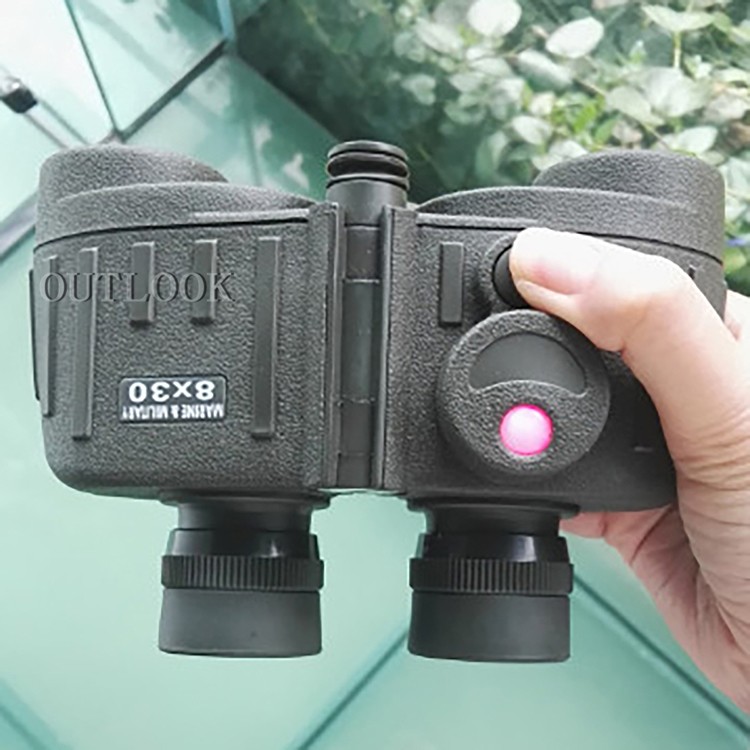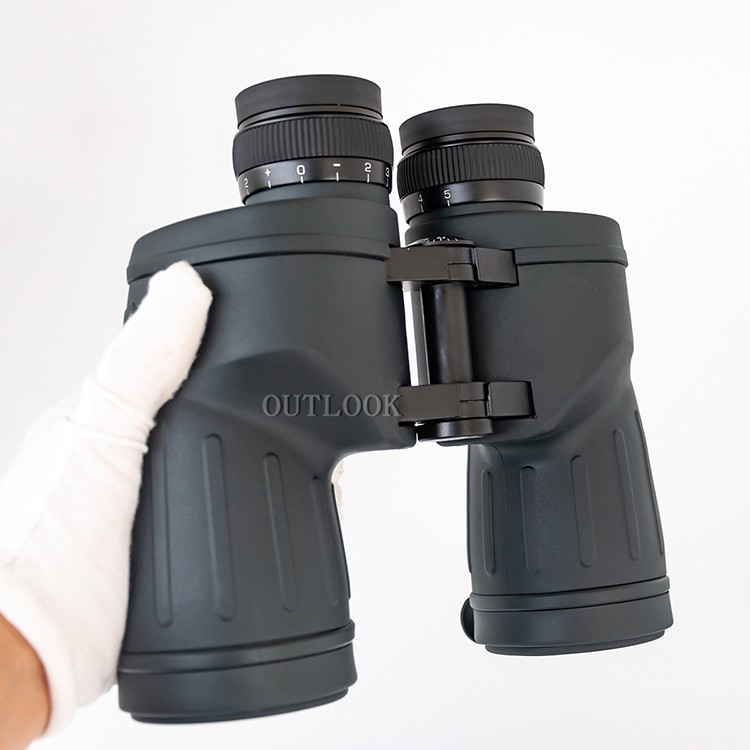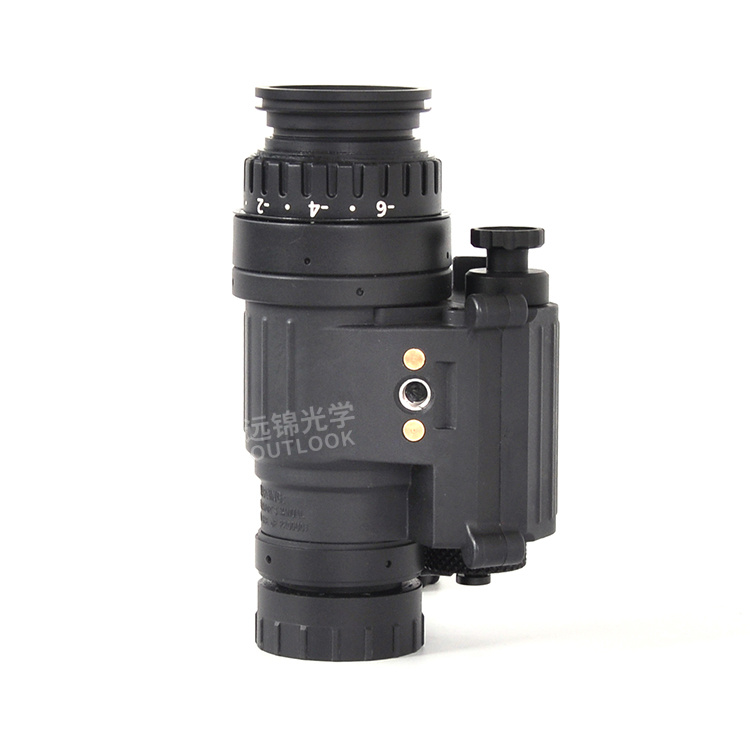How to choose monocular and binocular telescopes
Monocular telescopes are portable optical observation tools used with one eye. Compared with binocular telescopes, they have more advantages in certain specific scenarios.
1. Main features of monocular telescopes
(1) Structral features of monocular telescopes
- **Single-tube design: Only one optical channel, monocular observation is required.
- **Lightweight and portable: Small size (usually the size of a lipstick or a small flashlight), light weight (100~300g).
- **Simple optical system: Generally uses roof prisms or Porro prisms, with compact structure.
(2) Optical parameters of monocular telescopes
- **Magnification: Common 6×, 8×, 10× (some high-magnification models can reach 12×~16×).
- **Objective aperture: 20mm~50mm (affects the amount of light entering and the field of view).
- **Field of view (FOV): Usually 5°~8°, slightly narrower than binoculars.
- **Minimum focusing distance: Usually 1~3 meters, suitable for observing close details.
2. The core advantages of monocular telescopes
**Super portability: Can be put into a pocket or hung on a keychain, suitable for carrying around. |
**One-handed operation: Monocular telescopes can be used with one hand, suitable for quick observation. |
**Strong concealment: Small size, not easy to be discovered, suitable for military, hunting and other scenes. |
**Low cost: Under the same specifications, the price is usually cheaper than binoculars. |
**Multi-function expansion: Some monocular telescopes can be connected to a mobile phone (as a telephoto lens) or a tripod. |
**Strong close focus ability: Monocular telescopes can observe details within a few meters (such as insects, flowers and plants).
3. Main uses of monocular telescopes
(1) Outdoor travel and exploration
- **Hiking/mountaineering: Lightweight equipment, observe distant terrain or wild animals at any time.
- **Camping: Monocular telescopes can check the surrounding environment and avoid danger (such as snakes, bears, etc.).
(2) Watching games and performances
- **Sports events: Monocular telescopes can quickly lock on distant athletes.
- **Concerts/theaters: Monocular telescopes can see the details of the stage clearly, replace telescopes.
(3) Military and tactical uses
- **Reconnaissance/surveillance: Covert observation, not easy to be exposed.
- **Hunting/shooting assistance: Monocular telescopes quickly aim at the target without interfering with the shooting posture.
(4) Nature observation and photography of monocular telescopes
- **Bird watching: monocular telescopes suitable for short-term observation, but not as comfortable as binoculars.
- **Mobile telephoto photography: Some monocular telescopes can be paired with mobile phones to become telephoto lenses.
(5) Daily emergency and tool use of monocular telescopes
- **Search and rescue**: looking for lost people or checking distant signs.
- **Maintenance inspection**: observing high-altitude power lines, building structures, etc.
4. ✅ Applicable scenarios of monocular telescopes
- **Requires light and fast observation
- **High concealment requirements
- **Budget is limited, but telephoto function is still required
- **Close-up observation.

Binoculars are an optical device for binocular observation. Compared with monoculars, binocular telescopes can provide a wider field of view, a more comfortable observation experience and a stronger sense of three-dimensionality.
1. Main features of binocular telescopes
(1) Structural features of binocular telescopes
- **Dual barrel design: Binocular telescopes have two independent optical channels, simultaneous observation of both eyes.
- **Prism system: Binocular telescopes usually use Roof Prism or Porro Prism, which affects the volume and image quality.
- **Ergonomic design: More stable when held with both hands, some models support anti-slip rubber wrapping.
(2) Optical parameters of binoculars telescopes
- **Magnification (such as 8×, 10×): Affects the observation distance, but high magnification (such as 12× and above) requires a tripod.
- **Objective lens diameter (such as 42mm, 50mm): determines the amount of light entering and affects the performance in low-light environments.
- **Field of view (FOV): binocular usually wider than a monocular (6°~10°), which is convenient for tracking moving targets.
- **Exit pupil diameter & brightness: binoculars allow more light to enter, and night observations are clearer.
2. The core advantages of binoculars telescopes
**Advantages of binoculars telescopes
**More comfortable binocular observation: Reduce visual fatigue, suitable for long-term use.
**Strong stereoscopic perception: The brain fuses binocular images to enhance depth perception.
**Wider field of view: Easier to track dynamic targets.
**Higher brightness: Dual optical path design, better performance in low-light environments
**Stronger stability: Grip with both hands to reduce shaking, some models support anti-shake technology.
**Professional adaptability: Binoculars telescopes can be paired with tripods, filters and other accessories, suitable for astronomy, photography and other needs.

3. Main uses of binoculars telescopes
(1) Nature observation and ecological research
- **Bird watching**: High definition + wide field of view, easy to track flying birds.
- **Wildlife observation**: Observe wild animals at a safe distance.
(2) Astronomical observation
- **Stargazing/Moongazing**: Large-caliber models (such as 10×50, 15×70) are suitable for deep sky observation.
- **Meteor shower/comet observation**: Wide-angle models can capture a larger sky area.
(3) Outdoor sports and events
- **Sports competitions** (football, golf, etc.): See the details of athletes' movements clearly.
- **Hunting/shooting**: Distance measurement, aiming assistance, some models have distance measurement function.
(4) Navigation and military
- **Navigation: Waterproof and fog-proof models, for observing channel buoys or distant ships.
- **Military reconnaissance: Some military-grade binoculars have night vision and laser ranging functions.
(5) Travel and landscape appreciation of binoculars telescopes
- **Mountaineering/sightseeing**: Enjoy distant views (such as mountains and city panoramas).
- **Aurora observation**: High-brightness models are suitable for low-light environments.
4. ✅ Applicable scenarios of binoculars telescopes
- **Long-term observation
- **Requires stereoscopic perception and depth of field judgment
- **Dynamic target tracking
- **Low-light environment
How to choose monocular and binoculars telescopes
Binoculars are the preferred tool for professional observation, especially suitable for long-term use, dynamic tracking and low-light environments. If you are a birdwatcher, astronomy enthusiast, outdoor adventurer or marine/military user, binoculars can provide an experience far beyond a monocular!
Monocular telescopes are portability-first observation tools, suitable for quick observation, concealed use, and outdoor emergency, but are not as good as binoculars for long-term observation and professional scenes. If you are a traveler, outdoor enthusiast, tactical user, a monocular will be a very practical choice!


